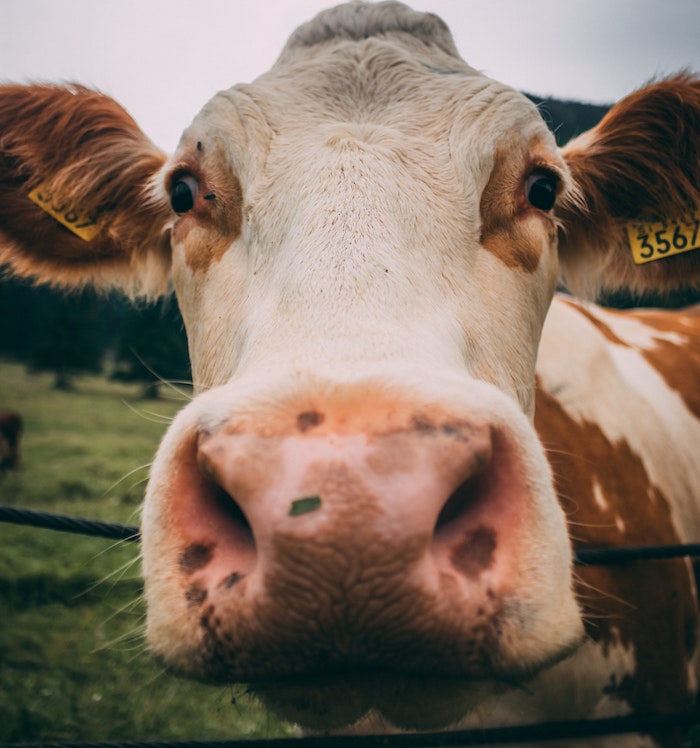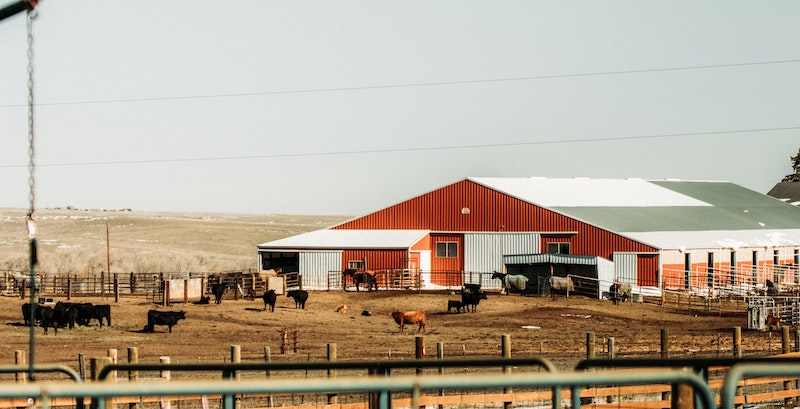As a representative and advocate of agriculture, Antibiotics in meat is a topic not to be taken lightly. Any animal given any kind of antibiotic cannot be slaughtered until the withdrawal period is over. This means no antibiotics are in any of the food you eat, regardless of the animal. Farmers are constantly trying to ensure that they use antibiotics only when needed and only to save animals’ lives. It is expensive and creates resistance if used too often or for no reason.
It’s also common for producers to focus on improving their genetics, which means that those animals who need antibiotics for illness reasons are culled out of an antibiotic-free program, and therefore strengthening the entire herd’s health, reducing the need for antibiotics in the future.
Still, marketing labels have invoked fear in consumers and caused unnecessary panic about something that isn’t so black and white.
Beef, It’s What’s For Dinner, answers some of your burning questions, below:
HOW ARE ANTIBIOTICS USED IN THE CATTLE RAISING PROCESS?
There has been a great deal of discussion lately about how antibiotics are used in raising livestock. The reality is that farmers and ranchers take antibiotic use in livestock very seriously and continuously evaluate their use based on the best possible science.
Let’s explore the role of antibiotics in animal care.
- Antibiotics are used in animal medicine to prevent, treat, or control disease, which is important to animal and human safety.
- When an animal gets sick, farmers, ranchers and veterinarians carefully evaluate if, and when, to administer antibiotics.
- Cattle farmers and ranchers believe not treating cattle that become sick is inhumane as part of their ongoing commitment to animal health and welfare. When administering antibiotics, they follow product label directions or the prescription provided by their veterinarian, meaning they adhere to usage guidelines to protect both animals and humans that have been rigorously tested and approved by the United States Food & Drug Administration (FDA).
HOW ARE ANTIBIOTICS GIVEN TO CATTLE?
- Depending on the circumstance, antibiotics may be given to cattle as individual injections or added to feed or water to treat a larger group that has been exposed to or to prevent illness.
ARE ANTIBIOTICS SAFE?
- All antibiotics must go through rigorous government scrutiny before being approved for use in livestock.
- Animal medicine goes through three layers of approval to determine if the medicine is safe for the animal, the environment and the humans who will consume the meat. All three areas must be evaluated before approval from the FDA.
- Even after they’re approved, antibiotics are continuously monitored and must be re-evaluated annually. The antibiotics will only stay on the market if they continue to be proven safe.
HOW ARE RANCHERS WORKING TO USE ANTIBIOTICS RESPONSIBLY?
- Farmers and ranchers must have authorization from a veterinarian to use antibiotics that are important to human medicine through feed and water and have invested in research and education programs designed to help improve how antibiotics are used.
- Farmers and ranchers have no reason to overuse antibiotics but rather every reason to use them as selectively as possible. Most importantly, responsible use is the right thing to do but furthermore, antibiotics are a costly input for the small business men and women who raise cattle.
- Farmers and ranchers worked with veterinarians and developed guidelines for the judicious use of antibiotics through the Beef Quality Assurance program decades ago. The commitment by cattlemen to responsible antibiotic use continues today with BQA educational resources like “Antibiotic Stewardship for Beef Producers” released in 2016.

Furthermore, Alltech helps debunk the antibiotic myths with these answers from their website:
With different views, opinions, and even misinformation available online at the touch of your finger, identifying the truth about antibiotic use in livestock can be a challenge. To help us debunk some of the myths, we asked a couple of experts, Dr. Tom Gillespie and Aidan Connolly, to weigh in on a few of the common questions:
What does it really mean to be antibiotic-free?
There is some confusion regarding what constitutes “antibiotic-free” food. The truth is that when all meat and milk reach the market, they are antibiotic-free because there is no antibiotic residue present. The major point of difference is whether the animal has been raised without antibiotics, meaning no antibiotics were used at any point in the animal’s life for any reason.
When I buy meat at the supermarket, if it is not labeled antibiotic-free, does that mean it has antibiotics in it?
Regardless of how it is labeled, absolutely no traces of antibiotics in any meat are allowed when it reaches the market. Before animals go to market, there is a withdrawal period for antibiotics, meaning any food or milk from animals that have been treated with an antibiotic may not enter the food supply until a predetermined amount of time has passed since the animal’s last dosage. Withdrawal times vary depending on the specific drug and the time they take to be processed by the animal, but the range on average is one to 60 days. The FDA is very thorough in ensuring no treated meat goes to market until it is safe to consume. This includes monitoring after the meat reaches the market to make sure producers are adhering to regulations. Alliances like the National Residue Program bring together groups including the USDA Food and Safety Inspection Service (FSIS), FDA and the EPA to ensure all meat is residue-free. The FSIS routinely tests meat to guarantee it safely meets the standards set by the FDA, and at the plant the USDA tests samples to confirm there are no violations.
Could an animal be treated with antibiotics for illness and still go to market?
Yes, even on farms and ranches where they focus on raising animals without antibiotics, if an animal is sick and needs antibiotic treatment, it is separated from the herd and can continue to go through traditional markets. However, the above-referenced withdrawal period would be required to ensure that no traces of the antibiotic remain in the meat/milk products. In meat production, an animal that has been treated with antibiotics is not put back with the same herd or labeled as raised without antibiotics.
How are antibiotics used in animal agriculture today?
Antibiotics are currently used for three purposes in animal production: to prevent disease (use for this is diminishing), to treat illness and to improve nutritional efficiency (which is also changing due to the FDA’s Veterinary Feed Directive and producer awareness). When selecting the proper program for their animals, producers and veterinarians use their experience, along with what has been scientifically proven, to design the right approach. Antibiotics can be administered through feed or water, as well as injection of individual animals.
How have antibiotics been used after 2017?
Following the FDA’s new guidelines for antibiotics, the use of medically important antimicrobial drugs used in animal production intended for food will require oversight of a licensed veterinarian. This will leave the decision to use a specific approved drug or a drug combination to the veterinarians who have the expertise and know how to accurately identify bacterial diseases that are present and the proper treatment for them.
Is it possible to raise animals completely antibiotic-free?
Yes, it is possible to raise animals completely antibiotic-free. However, when an animal is sick and requires an antibiotic, it is imperative that we do what is necessary to keep animals, humans and our food system safe. In these instances, bacterial infections can be addressed through farm-specific vaccination programs that are allowed by the USDA. When there is no disease or other health challenge, it is possible to raise animals without antibiotics. The challenge then becomes: How does the producer get the same production performance and profitability, and how do we produce enough to feed the world?
Does animal consumption of antibiotics affect human resistance?
There is no strong evidence definitively linking animal consumption of antibiotics to human resistance. Many believe that the majority of antibiotic resistance in humans is due to human use of antibiotics. In fact, removing antibiotics from animal production will not cause resistance to end. Antibiotic-resistant bacteria develop from many factors, including human misuse of antibiotics and regular use of disinfectants such as antibacterial soap. Antibiotic resistance is a natural phenomenon; Alexander Fleming saw the risk for antibiotic resistance when he discovered penicillin. With this knowledge, it is our responsibility to reduce this risk as much as possible. So regardless of the extent to which animal consumption is connected, we need to focus on strategies that minimize the overall risk of resistance.
Is it true that animal agriculture represents 80 percent of total antibiotic use?
The data comparing animal and human antibiotic use were obtained using different methods and measurements. Because of differing distribution methods and the fact that most antibiotics used in animal production are not used to treat humans, an accurate comparison can be challenging.
What are the challenges involved in a farmer converting to antibiotic-free?
When antibiotics are removed, there are many obstacles that can challenge the animals’ health and eat away at producer profitability. These include:
- Increased risk for exposure to bacteria/pathogens
- Susceptibility to stress
- Increased treatment costs
- Reduced feed consumption
- Increased variability and days to market
- Increased mortality
- Reduced water intake
- Poor gut integrity, leading to increased risk of response to feed contaminants
These risks can be costly, both monetarily and physically. In order to address them, producers have to reinforce their biosecurity measures and implement a nutritional program designed to strengthen the animals’ natural immunity.
If all animal agriculture moves to production without antibiotics for growth promotion, will farmers and ranchers still be able to feed the growing population in the future?
It is true that antibiotics can help maintain overall performance and productivity of animal production. With antibiotics unavailable as a growth-promoter source, other alternatives and methods have to be used to meet the growing food demand of our population. Two areas that need attention are increased biosecurity and enhanced nutrition. With the animal’s defenses down, nutrition is key to ensuring they stay as healthy and productive as possible. To protect our animals and our food supply, a major emphasis on providing nutrition that strengthens gut health and immunity will need to be central to every producer’s operation.
The bottom line is FARMERS EAT WHAT YOU EAT. We don’t want to provide unhealthy food for you, because we eat the same things.








